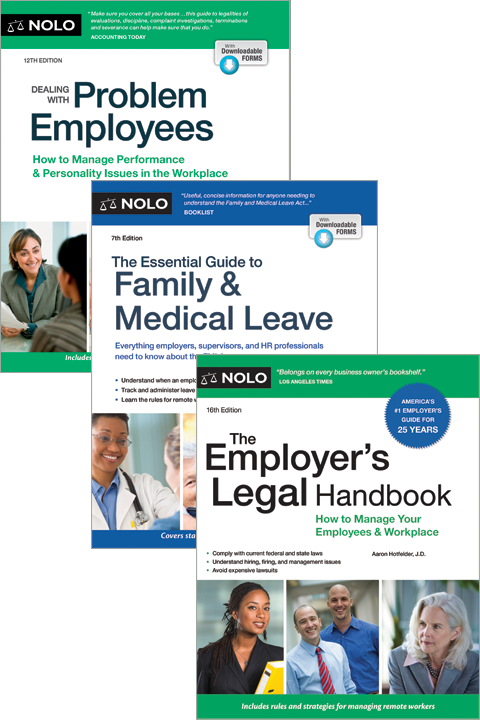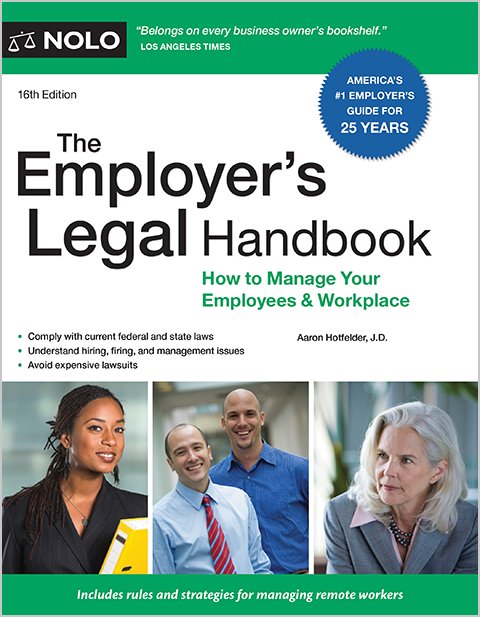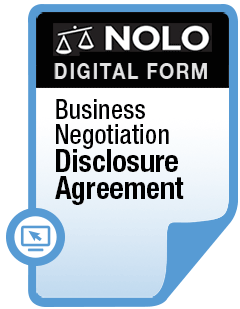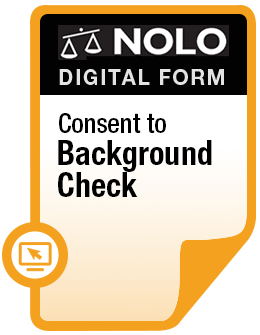New York employees may be eligible for time off under the federal Family and Medical Leave Act (FMLA) as well as paid leave under state laws and sick leave.
New York employers—like employers in every state—must follow the federal Family and Medical Leave Act (FMLA), which allows eligible employees to take unpaid leave for certain reasons. Once an employee's FMLA leave is over, the employee has the right to be reinstated to his or her position.
New York has its own paid family leave and temporary disability programs. The state also has a paid sick leave law, and some New York employees are entitled to take time off for military leave and adoption.
Employees are entitled to the protections of all applicable laws; if more than one law applies, the employee may use the most beneficial provisions.
Federal FMLA Rights
New York employees who are eligible may take up to 12 weeks of leave for serious health conditions, bonding with a new child, or preparation for a family member's military service; more leave is available for employees who need to care for a family member who was seriously injured on active military duty. For detailed information on FMLA leave, see Taking Family and Medical Leave.
Who Is Covered?
Employers in New York are subject to the FMLA if they have at least 50 employees for at least 20 weeks in the current or previous year.
Employees are eligible for FMLA leave if:
- they have worked for the company for at least a year
- they worked at least 1,250 hours during the previous year, and
- they work at a location with at least 50 employees within a 75-mile radius.
Reasons for Leave
FMLA leave is available if an employee needs time off to:
- recuperate from a serious health condition
- care for a family member with a serious health condition
- bond with a new child
- handle qualifying exigencies arising out of a family member's military service, or
- care for a family member who suffered a serious injury during active duty in the military. (You can find more information on these last two types of leave in Military Family Leave for Employees.)
How Much Leave Is Available?
New York employees may take up to 12 weeks of leave in a 12-month period for a serious health condition, bonding with a new child, or qualifying exigencies. This leave is available every 12 months, as long as the employee continues to meet the eligibility requirements explained above.
Employees may take up to 26 weeks of leave in a single 12-month period for military caregiver leave. However, this is a per-injury, per-service member entitlement. Unless the same family member is injured again, or another family member suffers an injury while on active duty, an employee may not take additional leave for this purpose.
Leave and Reinstatement Rights
Employees are entitled to continue their health insurance while on leave, at the same cost they must pay while working. FMLA leave is unpaid, but employees may be allowed (or required) to use their accrued paid leave during FMLA leave. And, if you are taking leave for a reason covered by New York's temporary disability insurance or paid family leave programs, you may be eligible for benefits during your time off; see below.
When an employee's FMLA leave ends, the employee is entitled to be reinstated to the same or an equivalent position, with a few exceptions.
New York Family and Medical Leave Laws
In addition to the rights granted by the FMLA, some New York employees are entitled to paid temporary disability and paid family leave, as well as unpaid time off for military family leave and adoption leave.
New York Temporary Disability Insurance
New York has a state temporary disability insurance (TDI) program, which pays benefits to employees who've worked for the employer for at least four weeks and are temporarily unable to work due to disability (including pregnancy) that's not related to their work (meaning that it's not covered by New York workers' compensation). After a 7-day waiting period, eligible employees may receive 50% of their normal wages (but only up to a legal maximum that is currently $170) for up to 26 weeks.
New York Paid Family Leave
Under New York's paid family leave program, employees who have worked for their employer for at least 26 weeks have the right to take time off for the following reasons:
- to care for a family member with a serious health condition
- to bond with a new child, or
- to handle certain obligations arising from a family member's military service or deployment.
The insurance will provide up to 12 weeks of paid leave to employees in order to:
- take care of family members, including parents, siblings, and children, who are ill or injured, or
- welcome a newborn child, an adopted child, or a foster child.
Employees can take up to 12 weeks off for family leave, with benefits up to 67% of their usual wages (capped at a maximum).
Paid Prenatal Leave in New York
New for 2025, New York employers must provide both full- and part-time employees with 20 hours of paid prenatal leave each year. The prenatal benefit is paid at each employee's regular rate of pay. Employees can use these 20 hours to attend doctor's appointments, medical procedures, testing, fertility treatments, or end-of-pregnancy care.
New York Military Family Leave
Employers with at least 20 employees must give time off to eligible employees who have a spouse who is a member of the National Guard, Reserves, or Armed Forces, and who is deployed during a period of military combat to a combat theater or combat zone of operations. Employers must grant employees up to ten days of leave while the employee's spouse is on leave during deployment.
Adoption Leave in New York
All employers that offer parental leave for the birth of a biological child must make the same amount of leave available to employee who adopt a child who is preschool age or younger (or who is up to 18 years old, if the child has a disability).
New York's Paid Sick Leave Law
Employers in New York state must provide employees with up to 56 hours of paid sick leave per year. Qualifying reasons for leave include:
- the mental or physical illness of an employee or an employee's family member
- ensuring the health and safety of an employee or an employee's family member who has been the victim of domestic violence, a family offense, a sexual offense, stalking, or human trafficking.
"Family member" is defined broadly to include domestic partners, step-children, step-parents, legal guardians, adopted children, grandparents, grandchildren, and many others.
Under the law, small employers (those with four or fewer employees and new of income of less than $1 million per year) must offer at least 40 hours of unpaid sick leave per calendar year.
Medium-sized employers with between five and 99 employees and employers with four or fewer employees and a net income of more than $1 million must provide at least 40 hours of paid sick leave per calendar year.
Large employers with at least 100 employees must provide at least 56 hours of paid sick leave per calendar year.
Employees must be paid for sick leave at their regular rate of pay or the minimum wage, whichever is higher.



